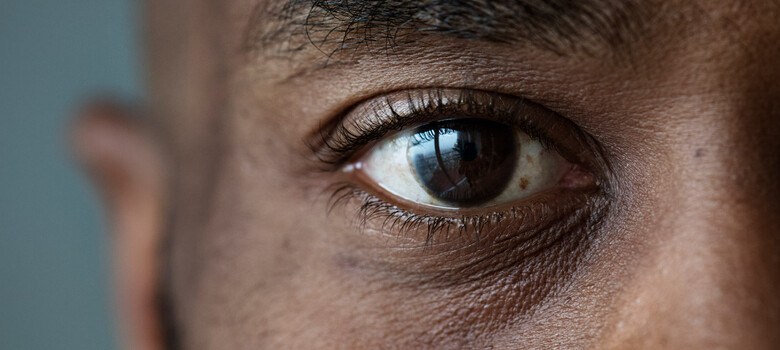 From the DukeHealth.org archives. Content may be out of date.
From the DukeHealth.org archives. Content may be out of date.
Does More Screen Time Put Your Child’s Eyes at Risk?

For many students this fall, going back to school means more time in front of a computer. But what are the effects of increased screen time on your child’s eyes? With more students using electronic devices to learn this year, previous limits on screen time may be hard to follow, said Yos Priestley, OD at Duke Eye Center Holly Springs. “I’ve been having a lot of discussions with families about how to best manage the extended screen time required for computer-based learning.”
Problems with Screen Time
Our eyes are not built for long periods of visually focused work, explained Dr. Priestley. They can fatigue or even spasm after extended time in front of a screen.
Another issue is that the rate at which we blink when looking at a device can be reduced by 50%. A slower blink rate can lead to dry eyes, burning, redness, and blurry vision -- all signs of eye strain.
Visual Hygiene Can Prevent Eyestrain
To minimize the risk of developing eye strain, Dr. Priestley urges children and parents to follow these “visual hygiene” tips.
- Don’t sit too close: A computer screen should be at least a forearm’s length from the face. Ask your child to make a fist and touch it to their nose. The screen should be at least as far back as their elbow. The height of the screen should be at or slightly below eye level -- not any higher.
- Adjust screen brightness: The illumination of the screen should match the light in the room. This means children should not sit in a dark room with a bright screen or vice versa. Also, you may be able to lower the blue light level of your screen. Although research on the advantages of reducing blue light is mixed, you can try changing this setting and monitoring your child’s response.
- Follow the 20/20/20 rule: At least every 20 minutes, have your child look at something at least 20 feet away for at least 20 seconds. Taking brief breaks to relax and reset is important.
- Remember to blink: Blinking keeps the eyes moist and is essential for eye comfort. Dr. Priestley recommends following a “blink, blink, squeeze” pattern to replenish tears. Although it may seem silly, you can help by reminding your child to blink.
- Wear anti-glare glasses: If your child wears glasses, an anti-glare or anti-reflective coating reduces glare from the screen and can provide relief from eyestrain. Although they are not harmful, blue-light-blocking glasses have no proven benefits for preventing eyestrain and are not recommended.
When to See an Eye Doctor
For most children, following these visual hygiene tips can prevent or significantly reduce eyestrain. However, if your child experiences frequent headaches, blurred vision, or eye discomfort, it’s time to see an eye doctor. They can diagnose or rule out other problems such as persistent dry eyes, fit your child with glasses, or update an existing prescription.




